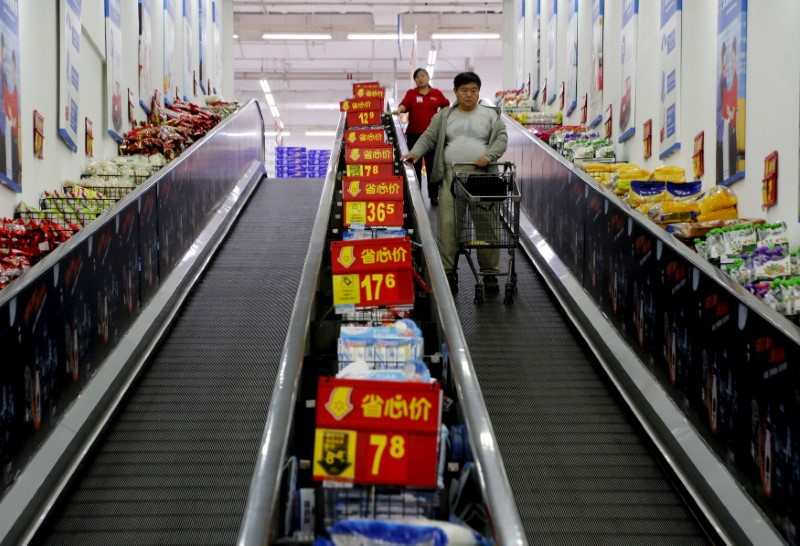(Bloomberg) -- China is set to report roaring growth in economic activity in the first two months of the year, with figures largely distorted by comparisons from a year ago when the nation was the first in the world to go into lockdown.
Underneath those eye-popping numbers though will be the first look at whether the economy’s two-speed recovery from the pandemic persisted in the first two months of the year. Growth has so far been fueled by an export and industrial-led boom, with consumer spending slow to pick up.
China posted record contractions in the data a year ago when the economy was mostly shut down, first because of the usual Lunar New Year holiday break, and then a lockdown to contain the world’s first Covid-19 outbreak.
With the pandemic now under control domestically and the economy mostly reopened, comparisons with a year ago make it difficult to assess the true momentum of the recovery, especially for consumers.
Read More: China Heads for Record GDP Growth in Months of Wild Data Swings
Comparing the actual value of retail sales should provide some guide as to whether private consumption continued its pick up from late 2020, or is still struggling.
“As the recovery has been largely driven by the industrial recovery, I would focus on retail sales,” said Raymond Yeung, chief economist for Greater China at Australia and New Zealand Banking Group in Hong Kong. “Headline growth below 32% would be considered weak.”
Economists like Bruce Pang of China Renaissance Securities Ltd. are looking at comparisons with 2019 data instead to get a better sense of the recovery. He said any year-on-year growth rate below 15% would be considered weak.
Whatever the actual numbers, the data will still show China as the only major economy that’s powering out of the pandemic, propelled by rising debt and an export boom. The government is now looking to gradually pull back on its fiscal stimulus and rebalance growth so that it’s driven more by consumption.
That was a key theme outlined by the government during the National People’s Congress, China’s biggest political meeting of the year, which concluded last week. The government set a modest growth target of “above 6%” for 2021 in comparison with the 8.4% expansion economists predict, allowing officials to focus on curbing risks, such as easing debt and asset bubbles.
Read More: What We Learned From China’s Biggest Political Meeting
Another factor complicating the data in the first two months of the year was the imposition of travel restrictions before the Lunar New Year break, which fell in February. To curb sporadic virus cases in some parts of the country, the government discouraged people from making their annual trips home for the holidays.
That likely helped to boost industrial output, with factories able to remain open or resume production earlier than usual to meet soaring export demand. But it also suppressed spending on tourism and travel, restaurants and leisure activities as millions of people refrained from booking train and air tickets and cut back on hosting banquets and buying presents.
Through March 8, people took almost 41% fewer trips this year than in 2020, according to data from the Ministry of Transport, and travel was down almost 71% compared to the same period in 2019. Consumption in lower-tier cities and the countryside likely took a hit, while higher-tier cities probably benefited as people stayed near their workplace during the holidays.
Iris Pang, chief economist for Greater China at ING Groep (AS:INGA) NV in Hong Kong, said growth rates below 20% for any of the data released Monday should be considered weak given last year’s very low base.
“On retail sales, I would look at catering, which has been heavily affected by social distance measures,” she said.
©2021 Bloomberg L.P.
